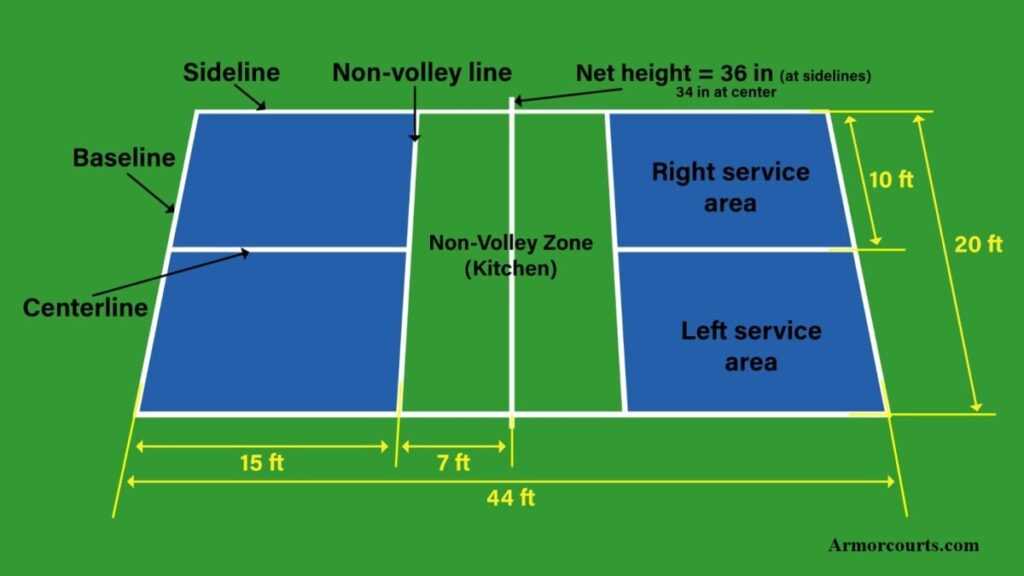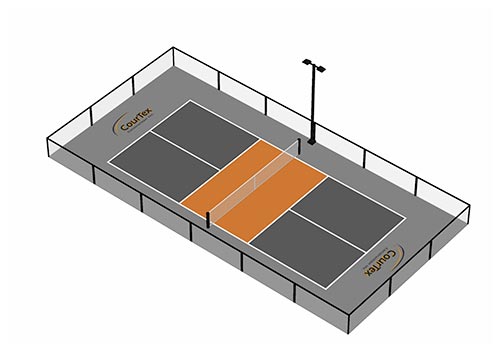Pickleball Court Construction Cost Overview-- What to Expect
Pickleball Court Construction Cost Overview-- What to Expect
Blog Article
Sustainable Practices in Pickleball Court Construction You Should Know
As the popularity of pickleball proceeds to climb, so as well does the demand for lasting methods in court building. This method not only addresses environmental concerns but also enhances the long life and functionality of the courts. From picking green products to applying effective water drainage and energy-saving lights options, there are various approaches to consider. Yet, the influence of these methods expands much past the court itself. Recognizing exactly how each element adds to a much more lasting future welcomes further expedition into the complex balance in between entertainment growth and environmental stewardship.
Selecting Eco-Friendly Materials
Selecting eco-friendly products is a crucial step in the building and construction of sustainable pickleball courts. The option of sustainable materials not just reduces environmental effect yet also improves the durability and efficiency of the court. Trick products consist of recycled rubber for the surface, which provides outstanding longevity and shock absorption while drawing away waste from land fills.
Furthermore, making use of locally sourced materials minimizes transportation exhausts and supports regional economic situations. Pickleball court construction. Using native hardwoods for secure fencing and seating can supply a sustainable visual while ensuring resilience versus the components.
Incorporating permeable materials for court foundations can even more contribute to sustainability by allowing for all-natural water drain and decreasing runoff. These options not only shield neighborhood communities yet likewise advertise healthier play settings.
Efficient Water Drainage Solutions
While the choice of environmentally friendly products is vital, applying effective water drainage solutions is just as crucial for keeping lasting pickleball courts. Proper drainage not only secures the court surface from water damage but likewise decreases erosion and runoff, promoting ecological honesty.
Effective drainage systems can include permeable paving, which permits water to penetrate the ground as opposed to pooling externally. This minimizes the chance of standing water, which can cause mold and various other upkeep issues. Furthermore, including tactically placed drainage networks and swales can direct excess water away from the court area, ensuring a dry having fun surface area and preventing soil disintegration.
Making use of indigenous plants in the landscape design around the courts can even more improve drainage by taking in excess water and decreasing overflow. These plants need less irrigation and promote biodiversity, straightening with lasting practices.
Furthermore, it is crucial to consistently keep the water drainage system to ensure its long-term efficiency. This includes clearing debris and monitoring for clogs. By prioritizing reliable drainage services, pickleball court manufacturers can dramatically add to the sustainability and durability of the facility, inevitably benefiting both gamers and the setting.
Energy-Efficient Lighting Options
As the demand for pickleball proceeds to grow, integrating energy-efficient illumination options into court layout has actually come to be increasingly important for sustainability. Conventional illumination systems often consume excessive power, contributing to greater operational costs and environmental impact. For that reason, adopting modern, energy-efficient technologies is important for both new constructions and renovations.
LED (Light Emitting Diode) lighting stands out as a top option because of its long life and energy savings (Pickleball court construction). Contrasted to traditional illumination, LEDs use about 75% much less energy and can last approximately 25 times longer, considerably minimizing upkeep costs. The directional nature of LED illumination minimizes light contamination, ensuring that illumination is concentrated on the court rather than bordering areas.

Sustainable Surface Alternatives
Checking out lasting surface area alternatives for pickleball courts has actually gained traction among players and contractors alike. The emphasis on environment-friendly products not only lines up with the expanding ecological recognition yet additionally boosts the efficiency and durability of the courts.
This material provides excellent shock absorption, reducing the risk of injuries for players while advertising sustainability. These floor tiles are very easy to change and set up, and their flexibility allows for various court setups.
Natural yard courts are additionally becoming a sustainable selection, promoting biodiversity and decreasing the warm island effect. They require routine maintenance and water, which may not line up with all sustainability goals.

Water Preservation Techniques

Another reliable technique entails the setup of rain harvesting systems. These systems save and collect rain for use in keeping court surfaces and landscape design. This method not just conserves drinkable water but likewise reduces dependence on community resources.
Moreover, utilizing drought-resistant landscape design around the courts is vital. Indigenous plants require much less water and are much better adapted to regional environment problems, thus lowering overall water usage. Additionally, using efficient a knockout post irrigation systems, such as drip watering, makes certain that water is delivered directly to plant origins, minimizing evaporation and waste.
Conclusion
Integrating sustainable practices in pickleball court building and construction considerably adds to ecological conservation and this content resource effectiveness. Utilizing green materials, carrying out efficient water drainage options, and adopting energy-efficient illumination options can significantly decrease environmental effect. Additionally, checking out sustainable surface choices and employing water preservation methods enhance the total sustainability of these leisure centers - Pickleball court construction. By focusing on these methods, the building and construction of pickleball courts can align with more comprehensive environmental goals while advertising longevity and performance within communities.
As the popularity of pickleball proceeds to climb, so also does the requirement for sustainable methods in court building and construction.Choosing environmentally friendly products is an important action in the building and construction of lasting pickleball courts. By prioritizing energy-efficient illumination choices, pickleball court fitters can add to an extra sustainable future while satisfying the requirements of stakeholders and gamers alike.Integrating sustainable surface alternatives not only enhances the performance of pickleball courts but also leads the means for applying effective water preservation methods.Integrating sustainable practices in pickleball court construction substantially contributes to environmental conservation and resource performance.
Report this page